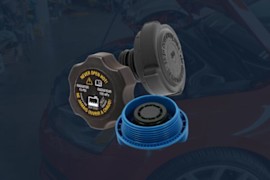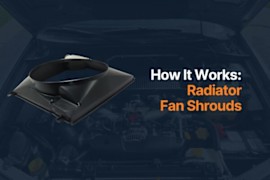{
"lazyNodes": false,
"abFitnotesFlag": false,
"abCrawlReviews": false,
"productOptionsCookie": false,
"orderDelayFlag": false,
"skipSessionCookie": false,
"covidMessage": false,
"fullTitleCookie": false,
"nrLoggerCookie": false,
"checkoutReviewCookie": false,
"productOptionSeqCookie": false,
"maintenanceFlag": false,
"bufferETACookie": false,
"multiShippingDiscountFlag": false,
"newFitmentFlag": false,
"surveyOptInFlag": false,
"crossSellFlag": false,
"skuMappingFlag": false,
"paySplitCookie": false,
"callDisableFlag": false,
"zipPaymentFlag": "u",
"hassleFreeReturn": false,
"lifetimeReplacement": false,
"cpn_off": false
}Volkswagen EuroVan Radiators
Shop Catalog
![]() WARNING: This product can expose you to chemical which is known to the State of California to cause cancer and birth defects or other reproductive harm. For more information go to www.P65Warnings.ca.gov.
WARNING: This product can expose you to chemical which is known to the State of California to cause cancer and birth defects or other reproductive harm. For more information go to www.P65Warnings.ca.gov.
![]() WARNING: This product can expose you to chemical which is known to the State of California to cause cancer and birth defects or other reproductive harm. For more information go to www.P65Warnings.ca.gov.
WARNING: This product can expose you to chemical which is known to the State of California to cause cancer and birth defects or other reproductive harm. For more information go to www.P65Warnings.ca.gov.
Popular Products
Customer Guides
Volkswagen Eurovan Spark Plug Problems? Troubleshoot it Like a Pro!
A spark plug is what its name describes it. It ignites the air and fuel mixture in the combustion engine by producing a strong and instantaneous electrical spark. Even minor problems with the spark plug can cause a car to stall or to breakdown entirely, in the middle of the road. So, for convenience and safety purposes, it is important to take preemptive troubleshooting steps to keep the spark plug in your vehicle in good working condition. Read on.
Check the color of the spark plug.
The color of the plug will indicate the condition and the problem of the part. To take a good view, it would be best to remove the spark plug from the engine and inspect it thoroughly. A brown to grayish tan color indicates slight electrode wear that is completely normal for spark plugs that went through considerable mileage. A rust yellow color indicates a faulty firing end that can cause hard starting in cold temperatures. Excessive amounts of dust deposits in light brown color masks the spark of the plug, hence, causes engine misfires and hesitation when accelerating.
Check the composition and consistency of the deposits.
Dry soot indicates weak ignition, and that the spark plug cannot handle the heat range a vehicle requires. The only way to solve this problem is to change the spark plug assembly entirely. Meanwhile, a spark plug coated with oil indicates worn piston rings; change the rings linking the plug to the combustion chamber, and you should be good to go. Lastly, ash deposits encrusted on the side of the electrodes are derived from oil and fuel additives, installing a new valve guide seal will prevent oil leaks into the combustion chambers. If this doesn't solve the problem, try changing your choice of petrol.
Important!
If the electrodes seem to be melting-this can also be spotted if you find white deposits covering the insulators-change the spark plug immediately. This will cause debris to fly around in the combustion chamber. Failing to do so will lead to engine damage.
Whenever someone goes to a mechanic with engine trouble complaints, the first thing a seasoned grease monkey inspects is the spark plug. There are a few visible indicators that will diagnose common engine problems caused by a faulty spark plug. Replacing the part is the quickest fix to get you back on the road, but it will cost you an arm and a leg-not counting the hassles it will cause you! What if we tell you that you can prevent engine problems by keeping the spark plug in your Volkswagen Eurovan in good shape? Read on for some helpful tips.
Check the appearance of the central electrode.
The central electrode experiences the hottest temperature during the ignition process since it is the very part that emits the sparks. This part wears out after prolonged use, so it is necessary to check it regularly. If the central electrode already begins to appear pointed, then it is a good sign that the spark plug has lived its life and it needs replacement soon.
Remove the black deposits.
The most serious case of spark plug deposit is oil discharge. If you notice some black excretion surrounding the part, you need to clean it immediately as a precaution. There's no telling what the maximum allowable amount of oil deposit is, since once the oil deposits build up, it will cause the combustion chamber to misfire. Misfires might bring you fatal accidents since engine problems don't choose the most convenient time or place.
Think about your safety.
Before actually removing the spark plug from the combustion chamber, it is wise to disconnect the negative cable from the vehicle's battery first. This will prevent chances of electric shocks when you tinker under the hood. Also, never attempt to start working on the spark plugs until the engine is completely cool. Not only will it present a risk of burning yourself, but it will also damage the cylinder head when touched. Allow at least 24 hours to cool the engine down before uninstalling anything mechanical in your Volkswagen Eurocar.








